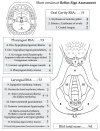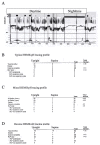Personalized Treatments Based on Laryngopharyngeal Reflux Patient Profiles: A Narrative Review
- PMID: 38003882
- PMCID: PMC10671871
- DOI: 10.3390/jpm13111567
Personalized Treatments Based on Laryngopharyngeal Reflux Patient Profiles: A Narrative Review
Abstract
Objective: To review the current findings of the literature on the existence of several profiles of laryngopharyngeal reflux (LPR) patients and to propose personalized diagnostic and therapeutic approaches.
Methods: A state-of-the art review of the literature was conducted using the PubMED, Scopus, and Cochrane Library databases. The information related to epidemiology, demographics, clinical presentations, diagnostic approaches, and therapeutic responses were extracted to identify outcomes that may influence the clinical and therapeutic courses of LPR.
Results: The clinical presentation and therapeutic courses of LPR may be influenced by gender, age, weight, comorbidities, dietary habits and culture, anxiety, stress, and saliva enzyme profile. The clinical expression of reflux, including laryngopharyngeal, respiratory, nasal, and eye symptoms, and the hypopharyngeal-esophageal multichannel intraluminal impedance-pH monitoring profile of patients are important issues to improve in patient management. The use of more personalized therapeutic strategies appears to be associated with better symptom relief and cures over the long-term. The role of pepsin in LPR physiology is well-established but the lack of information about the role of other gastrointestinal enzymes in the development of LPR-related mucosa inflammation limits the development of future enzyme-based personalized diagnostic and therapeutic approaches.
Conclusion: Laryngopharyngeal reflux is a challenging ear, nose, and throat condition associated with poor therapeutic responses and a long-term burden in Western countries. Artificial intelligence should be used for developing personalized therapeutic strategies based on patient features.
Keywords: future; gastroesophageal; head neck surgery; laryngeal; laryngopharyngeal; otolaryngology; personalized; reflux; therapy; treatment; voice.
Conflict of interest statement
The author declares no conflict of interest.
Figures





References
-
- Lechien J.R., Akst L.M., Hamdan A.L., Schindler A., Karkos P.D., Barillari M.R., Calvo-Henriquez C., Crevier-Buchman L., Finck C., Eun Y.-G., et al. Evaluation and Management of Laryngopharyngeal Reflux Disease: State of the Art Review. Otolaryngol. Head Neck Surg. 2019;160:762–782. doi: 10.1177/0194599819827488. - DOI - PubMed
Publication types
LinkOut - more resources
Full Text Sources

